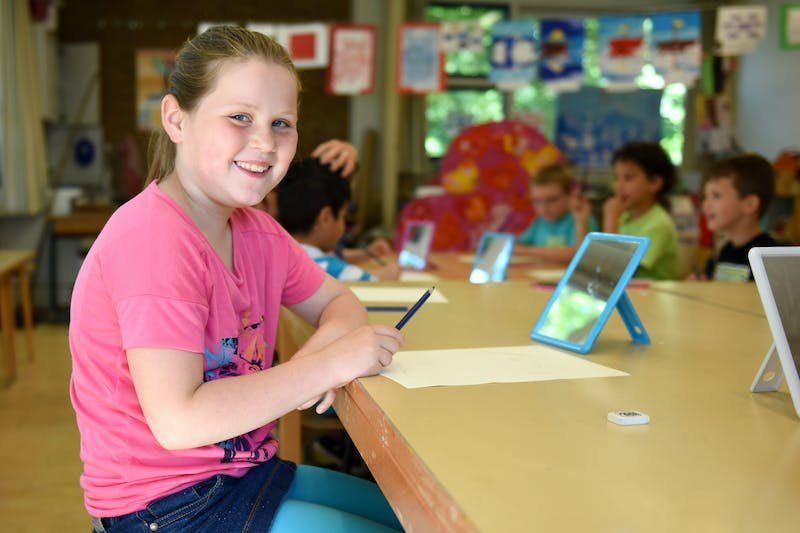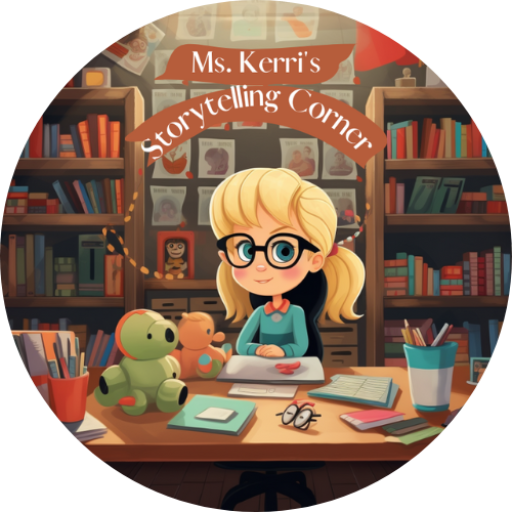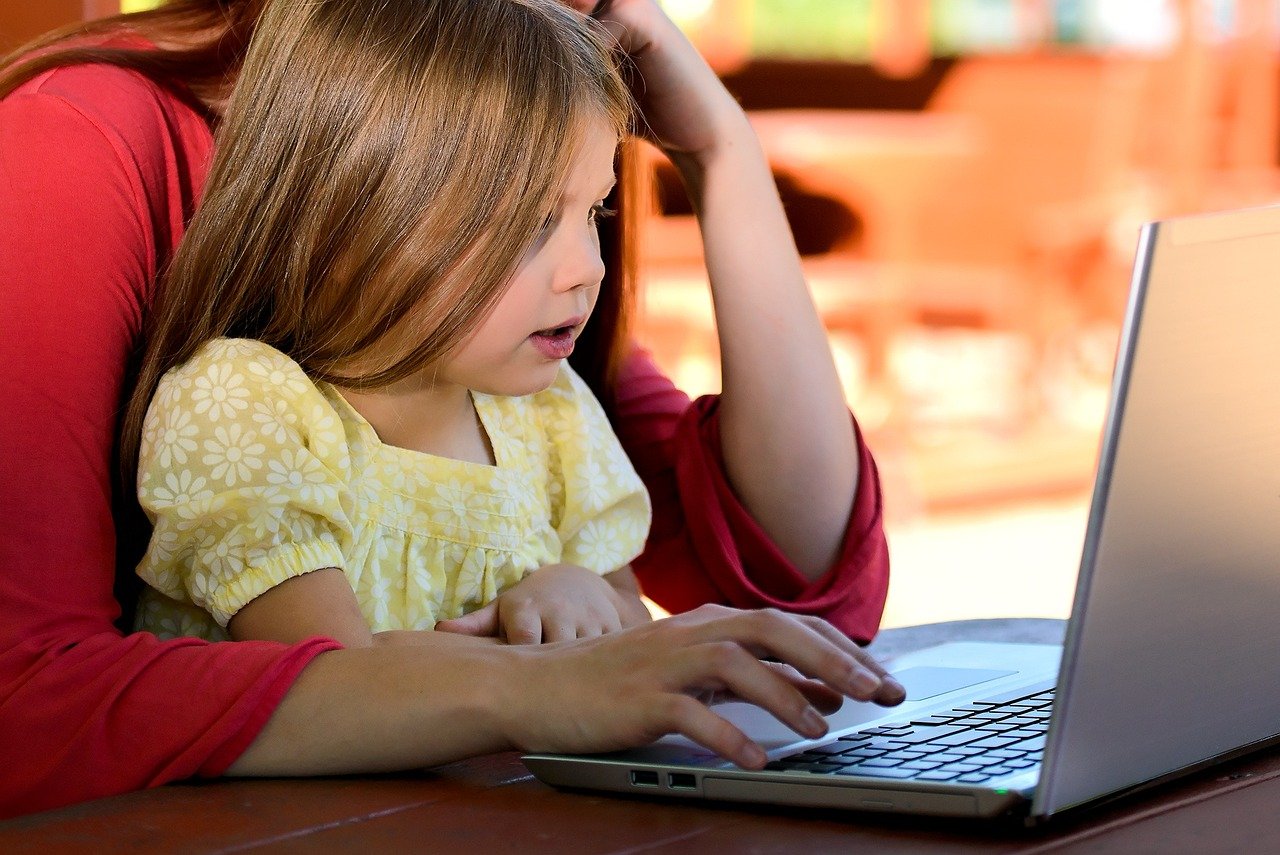
Incorporating Technology in Early Education: Balancing Screen Time for Kindergarteners
As technology continues to shape our society, it is essential to recognize its potential in transforming the field of education, even at the earliest stages of a child’s development. Kindergarten serves as a critical period for children to acquire foundational skills and knowledge that will shape their educational journey. However, striking a balance between incorporating technology and ensuring appropriate screen time for kindergarteners has become a challenge for educators and parents alike. This article explores the importance of early technology integration in education, delves into the benefits and challenges of screen time for kindergarteners, and provides strategies for finding equilibrium in the digital age.
The Importance of Early Technology Integration in Education
In this digital age, it’s becoming increasingly important to incorporate technology into early education. As much as we may try to resist it, technology is a pervasive part of our lives, and by introducing it early on, we can help children develop the necessary skills to navigate the ever-changing landscape of the digital world.
Recognizing the Changing Landscape of Education
Gone are the days when education solely relied on textbooks and classroom lectures. Technology has revolutionized the way we learn, and it’s crucial for educators to adapt to this changing landscape. By integrating technology into early education, we can better prepare students for the future and equip them with the digital literacy skills they’ll need to succeed in an increasingly tech-driven society.
Benefits of Incorporating Technology in Early Education
Integrating technology into early education offers a multitude of benefits. It can enhance children’s engagement and motivation, making learning more fun and interactive. Technology also provides opportunities for personalized learning, allowing each child to progress at their own pace. Furthermore, it can foster creativity, critical thinking, and problem-solving skills, preparing children for the challenges they’ll encounter in their future careers.

Understanding the Benefits and Challenges of Screen Time for Kindergarteners
Screen time has become a hot topic when it comes to early education, particularly for kindergarteners. While there are undeniable benefits to incorporating technology, it’s crucial to strike a balance and be mindful of the potential challenges associated with excessive screen time.
The Role of Screen Time in Cognitive Development
Screen time, when used appropriately, can support cognitive development in kindergarteners. It can expose children to new concepts, stimulate their imagination, and expand their knowledge. Educational apps and programs can reinforce foundational skills like literacy and numeracy, helping children develop a solid educational foundation.
Potential Challenges and Concerns of Excessive Screen Time
However, excessive screen time can have negative consequences. It’s important to be aware of the potential risks, such as decreased physical activity, disrupted sleep patterns, and social isolation. Additionally, too much screen time can lead to passive consumption of content, hindering active engagement and critical thinking. Striking a balance between screen time and other learning activities is essential for ensuring a well-rounded educational experience.
Strategies for Implementing Technology in Early Education
When incorporating technology into early education, it’s crucial to have a well-thought-out strategy in place. By following some key strategies, educators can maximize the benefits of technology while mitigating the potential drawbacks.
Establishing Clear Goals and Objectives
Before introducing technology into the classroom, educators should establish clear goals and objectives. What skills or knowledge do they want their students to gain through technology? By having a clear vision in mind, educators can select appropriate educational tools and design effective lessons that align with their objectives.

Creating a Balanced Technology Curriculum
A balanced technology curriculum is essential for ensuring that screen time is not the sole focus of early education. Incorporating a variety of learning activities, such as hands-on experiments, group discussions, and creative projects, alongside technology, can provide a more holistic educational experience. By striking a balance between screen time and other learning activities, educators can create a well-rounded curriculum that addresses all aspects of a child’s development.
Best Practices for Balancing Screen Time with Other Learning Activities
Finding the right balance between screen time and other learning activities is key to ensuring a comprehensive early education experience. Here are some best practices to achieve that balance:

Integrating Technology into Hands-on Learning Experiences
Technology shouldn’t replace hands-on learning experiences; instead, it should complement them. Integrating technology into hands-on activities, such as using educational apps during science experiments or incorporating tablets into art projects, can enhance the learning process. This way, children can benefit from both the tactile experience and the digital resources, creating a well-rounded educational experience.
Encouraging Active Screen Engagement and Interaction
To make the most of screen time, educators should encourage active engagement and interaction with technology. Instead of passively consuming content, children should be encouraged to interact with apps, solve problems, and think critically. This active engagement fosters deeper learning and helps children develop valuable skills beyond simply using electronic devices.
By carefully considering the benefits and challenges of screen time, implementing a well-balanced technology curriculum, and promoting active engagement, early education can successfully incorporate technology while ensuring a comprehensive and engaging learning experience for kindergarteners. So, let’s embrace the digital age and prepare our little ones for the future!
Ensuring Age-Appropriate and Quality Digital Content for Kindergarteners

Understanding the Importance of Age-Appropriate Content
When it comes to incorporating technology in early education, it’s crucial to prioritize age-appropriate content for kindergarteners. While technology can offer various learning opportunities, not all digital content is suitable for young children. Age-appropriate content takes into account the cognitive abilities, attention spans, and developmental needs of kindergarteners. It ensures that the digital experiences provided align with their educational growth and interests while avoiding overwhelming or inappropriate material.
Evaluating and Selecting High-Quality Educational Apps and Software
Choosing high-quality educational apps and software plays a vital role in creating a positive digital learning experience for kindergarteners. Look for apps and software that are designed specifically for young learners and align with educational standards. Consider factors such as engaging visuals, interactive features, clear instructions, and educational objectives. Reading reviews and seeking recommendations from educators can also help in finding trusted sources. Remember, quality content can foster active learning and critical thinking skills while making screen time valuable for young learners.
The Role of Parents and Educators in Monitoring and Guiding Screen Time
Establishing Healthy Screen Time Guidelines at Home and School
Balancing screen time for kindergarteners is a joint responsibility that falls on parents and educators. Establishing healthy screen time guidelines ensures that technology usage remains productive and doesn’t replace other important activities. Setting limits on daily screen time, designating device-free zones, and encouraging breaks for physical activity and face-to-face interaction are essential. Consistency and open communication about expectations between home and school can help create a balanced and healthy approach to technology.
Effective Communication and Collaboration between Parents and Educators
To ensure the best outcomes for kindergarteners, parents and educators must collaborate and communicate regarding screen time and technology use. Regularly sharing information about apps, software, and digital activities can help align efforts and maintain consistency. Building a partnership allows for the exchange of insights and strategies, enabling both parties to provide a cohesive digital learning experience for children. By working together, parents and educators can optimize the benefits of technology while addressing any concerns or challenges that may arise.
Promoting Digital Citizenship and Responsible Technology Use in Kindergarten

Teaching Essential Digital Literacy Skills
Incorporating technology in early education should go beyond academic learning and encompass the development of digital literacy skills. Kindergarteners should be taught fundamental skills such as navigating digital interfaces, understanding online safety, and practicing responsible online behavior. By providing explicit instruction on how to evaluate and react to online content, educators can empower children to become informed digital citizens.
Instilling Responsible Online Behavior and Cyber Safety
Teaching kindergarteners about responsible online behavior and cyber safety is crucial in today’s digital age. Educators and parents should emphasize the importance of protecting personal information, recognizing reliable sources, and avoiding cyberbullying. Discussions and age-appropriate activities can help kindergarteners understand the potential risks of the online world while empowering them to make safe and responsible choices.
Evaluating the Long-term Impact of Early Technology Integration on Kindergarteners’ Development
Research on the Effects of Early Technology Use
As technology becomes more prevalent in early education, it is essential to evaluate the long-term impact on kindergarteners’ development. Ongoing research helps us understand the benefits and potential drawbacks of early technology integration. Studies investigate various aspects such as cognitive development, problem-solving skills, and social interactions in relation to technology use. By staying informed about the latest findings, educators and parents can make informed decisions and continuously improve the digital learning experience for young learners.
Long-term Cognitive, Social, and Emotional Impacts of Technology Integration
Understanding the long-term cognitive, social, and emotional impacts of technology integration is crucial for kindergarteners. While technology can enhance certain skills, such as digital literacy and critical thinking, it’s essential to consider the potential effects on other areas of development. Balancing digital experiences with other forms of learning and play is essential for healthy overall development. Ongoing assessment and reflection are necessary to determine the best practices for integrating technology in early education and ensuring optimal outcomes for kindergarteners.
In conclusion, incorporating technology in early education, including screen time for kindergarteners, can be a powerful tool for enhancing learning experiences and preparing children for the digital age. However, it is crucial to find the right balance and ensure that technology is used purposefully and responsibly.
By implementing strategies, monitoring screen time, providing age-appropriate digital content, and promoting digital citizenship, educators and parents can create a nurturing environment that maximizes the benefits of technology while prioritizing holistic development. By embracing technology as a valuable educational tool, we can empower kindergarteners to thrive in an increasingly digital world.
Frequently Asked Questions

1. Is it beneficial to incorporate technology in early education for kindergarteners?
Yes, incorporating technology in early education can be highly beneficial for kindergarteners. It can enhance their cognitive development, promote critical thinking skills, and provide interactive learning experiences that are engaging and motivating.
2. How much screen time is appropriate for kindergarteners?
While guidelines may vary, experts generally suggest limiting screen time for kindergarteners to no more than 1 hour per day. It is important to prioritize a balanced approach, ensuring that children also engage in physical activities, hands-on learning experiences, and social interactions.
3. How can parents and educators ensure the quality and age-appropriateness of digital content?
To ensure the quality and age-appropriateness of digital content for kindergarteners, parents and educators can carefully evaluate and select educational apps, software, and websites. Look for content that aligns with learning objectives, offers interactive and engaging activities, and has positive reviews from trusted sources.
4. What role do parents play in monitoring and guiding screen time for kindergarteners?
Parents play a crucial role in monitoring and guiding screen time for kindergarteners. They can establish clear guidelines, set limits on screen time, engage in co-viewing or co-playing activities, and encourage a healthy balance between screen time and other activities. Regular communication with educators and staying informed about digital safety and responsible technology use are also essential.


Ms. Kerri’s Corner provides a exciting virtual space for preschool learning. Through a variety of engaging activities, she exposes young minds to early math, literacy, science and social-emotional skills in a developmentally appropriate way. Centers for blocks, art, books and music allow children to explore hands-on learning at their own pace. Guided lessons subtly introduce number sense, letter sounds and narrative thinking. Careful observation gives insight into each child’s progress across domains. Viewers are also invited to participate, reinforcing that their ideas are valued. By making learning fun yet purposeful, Ms. Kerri lays the groundwork for future academic success while fostering creativity and imagination. Her program offers preschoolers valuable screen-based learning experiences.




